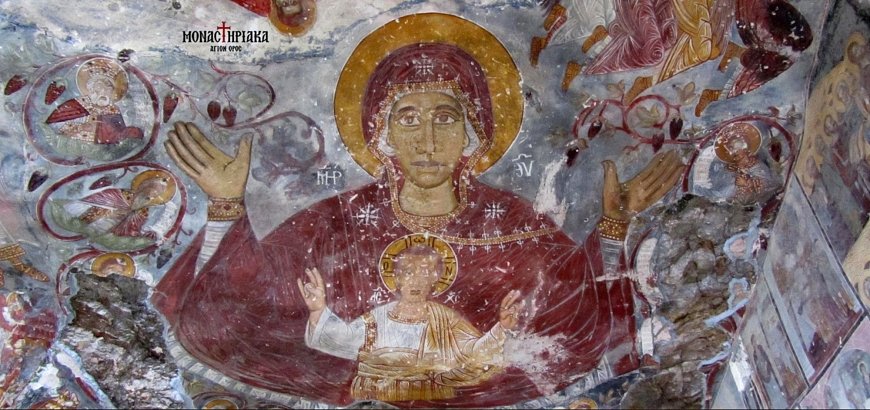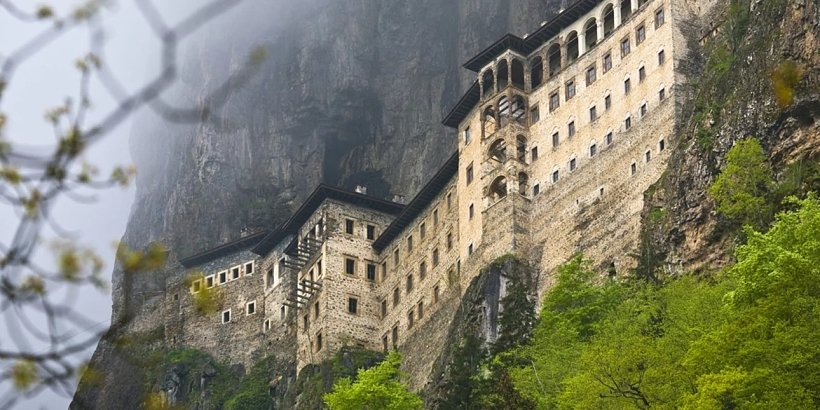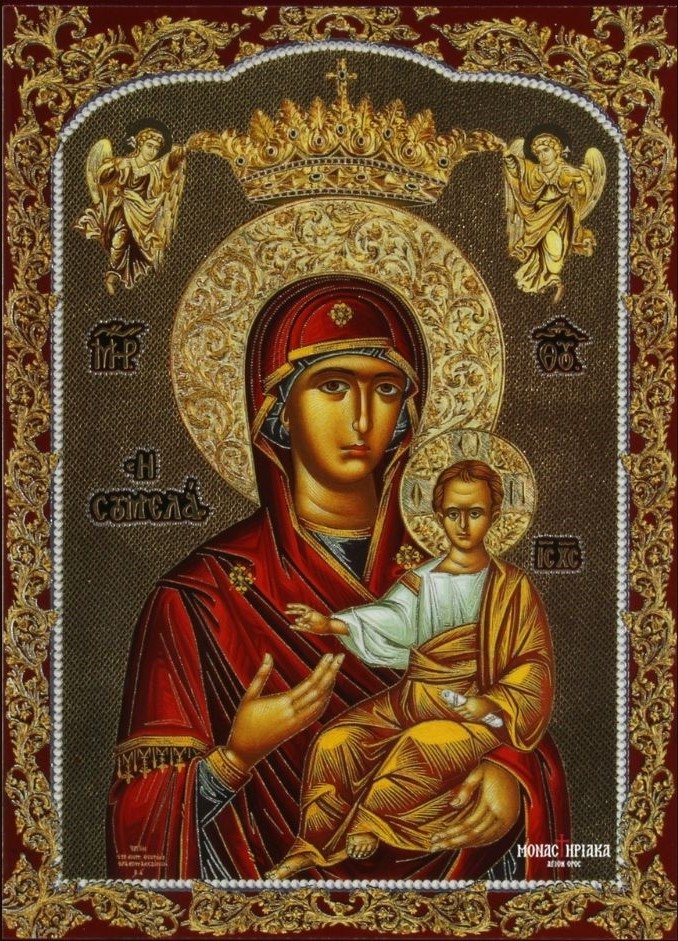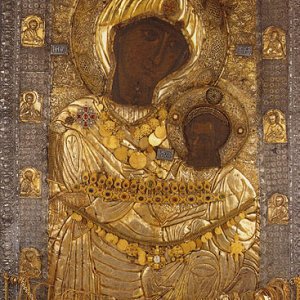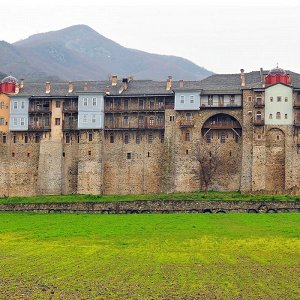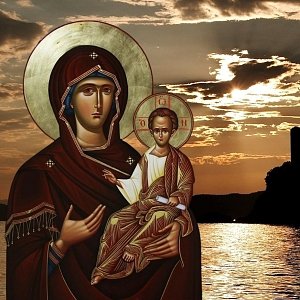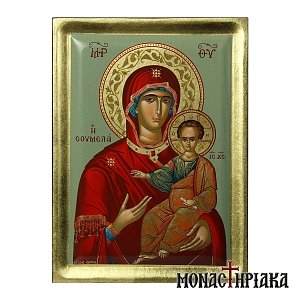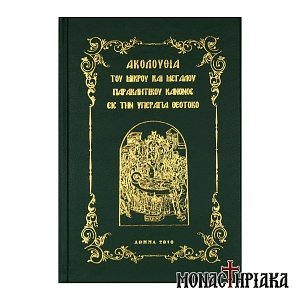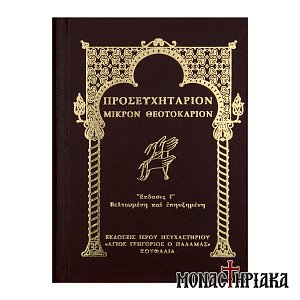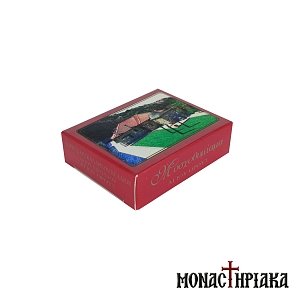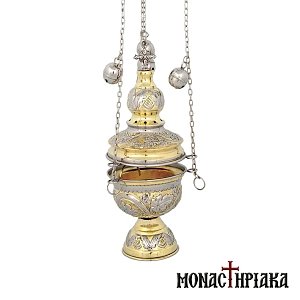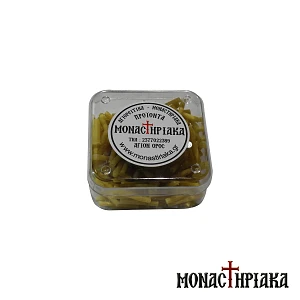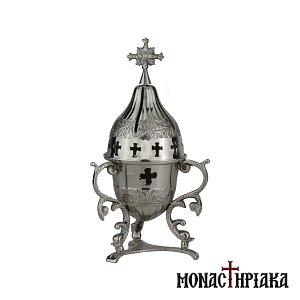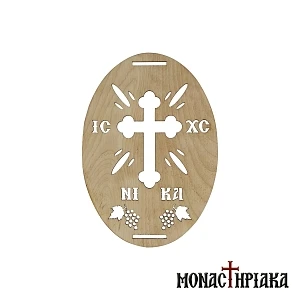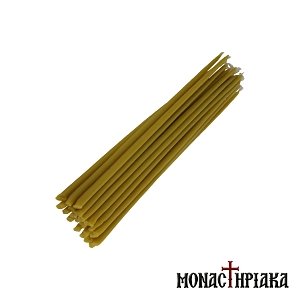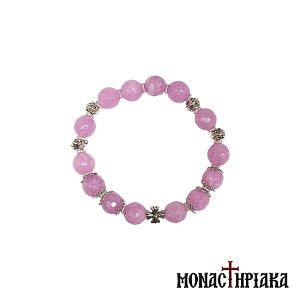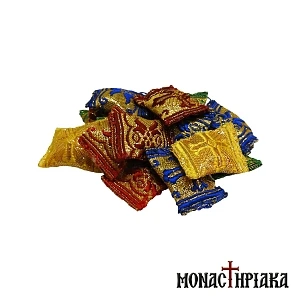Why is Theotokos called ‘Sumela’
The miraculous icon of the Theotokos Soumela dates back centuries and, according to Orthodox tradition, was carved on wood by the Evangelist Luke. Its name derives from Mount Melas and the Pontic dialect term in Greek ‘sou’. The Pontians used to say, «We will go up to the Theotokos of ‘Sou’ Melas».
In 386 AD, on Mount Melas in Trebizond, at an altitude of 1063 meters, the monastery of the Theotokos Soumela was founded following the miraculous revelation of the holy icon. The monastery was built by two Athenian monks, Barnabas and Sophronius.
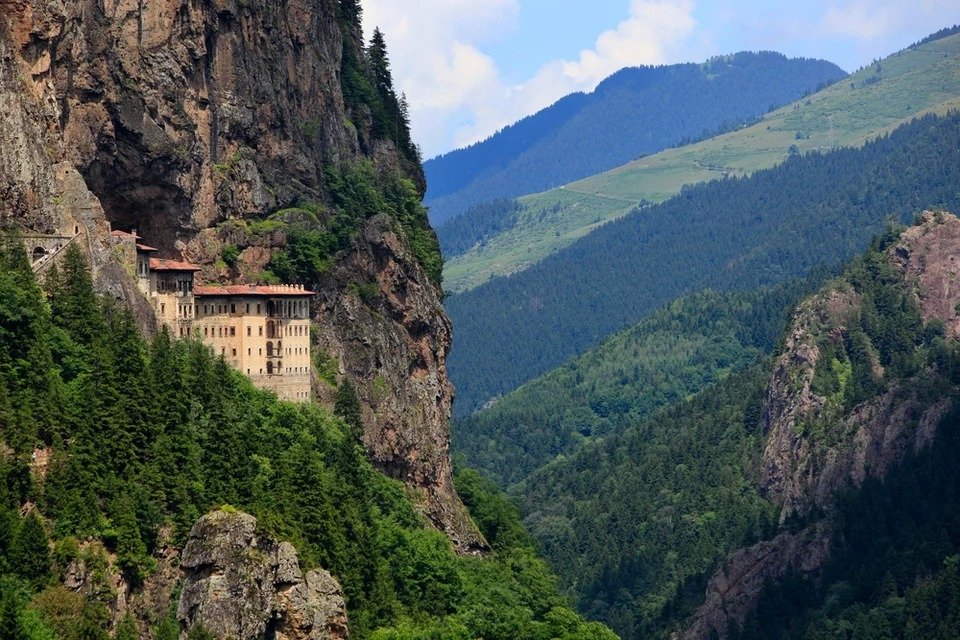
The combination of the holy icon of our Lady Soumela with the holy water possessing healing properties, was a focal point of the monastery and a magnet for pilgrims. There were many miraculous interventions by our Lady Soumela to protect the monastery from enemy invasions and destruction.
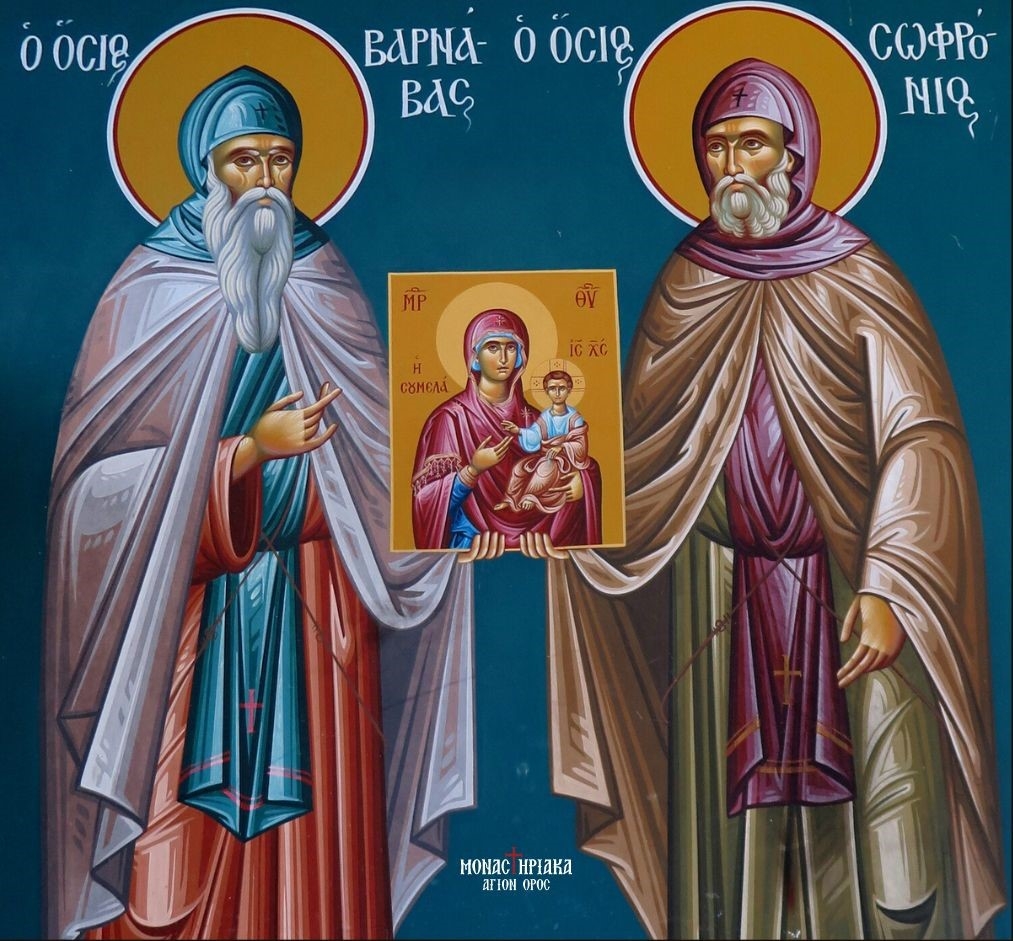
What the icon of the Theotokos Soumela depicts
The holy icon of our Lady Soumela is largely damaged due to the declines it has suffered, to the point where the depicted figures are no longer distinguishable. Only the outlines of the Theotokos and the young Jesus Christ are barely discernible.
Above the figures of the Ever-Virgin Mary and Jesus Christ, the inscriptions IC. XC. MP. ΘΥ. H COYMELHTHCA (Jesus Christ Mother of God, the Soumela) can be distinguished. Below the inscriptions, the crown on the head of the Virgin Mary appears to be held by two angels. Finally, the icon is enclosed in a silver-gilt case from 1700 AD, adorned with images, inscriptions, and precious stones.

The Destruction of the Monastery and the Hiding of the Icon
Unfortunately, in 1922 AD, the monastery was completely destroyed following the raid and attack by the Young Turks and Kemalists. As a result, the Greeks of Pontus and Asia Minor left their ancestral lands and were permanently uprooted.
Before their uprooting, the monks managed to hide the holy icon of the Virgin Mary Soumela in the chapel of Saint Barbara. Along with the icon, they hid a priceless Cross containing holy wood from Manuel III, as well as a handwritten Gospel by Saint Christopher.
Find here: Icons with the Theotokos Soumela

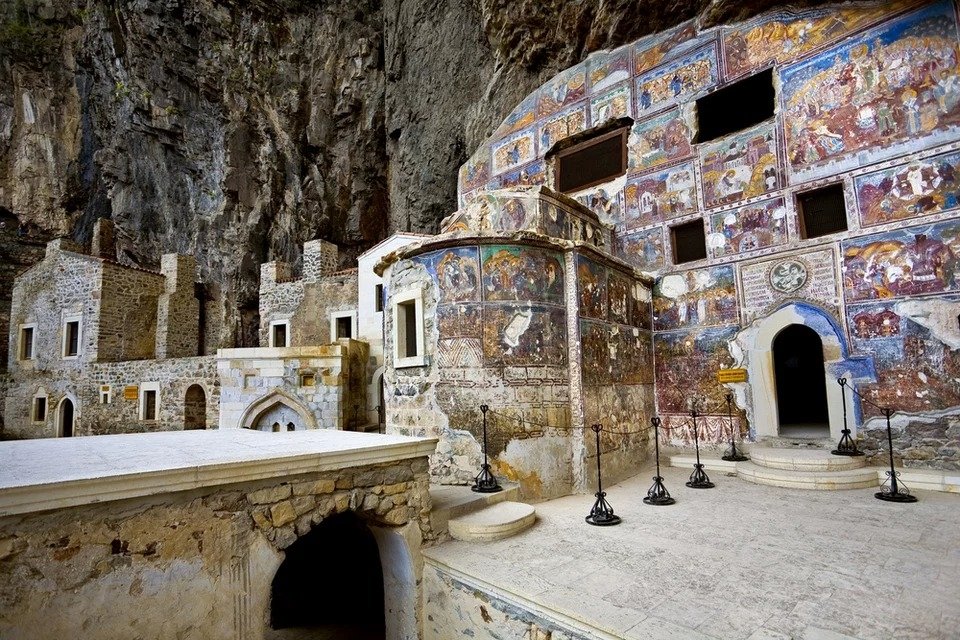
The Return of the Icon of the Theotokos Soumela to Greece
For approximately 10 years, the icon remained buried in the lands of Trebizond. In 1931 AD, one of the last monks of the monastery at that time, Hieromonk Ambrosios Soumeliotis, encouraged by Prime Minister Eleftherios Venizelos, traveled to Pontus with the purpose of retrieving the sacred relics and bringing them back to Greece.
Through diplomatic efforts, Eleftherios Venizelos managed to return the sacred relics to Greece, which remain symbols of utmost religious significance to this day. For approximately 20 years, the relics were kept in the Byzantine Museum of Athens.
The Construction of the Holy Monastery of the Theotokos Soumela
In 1951 AD, the construction of the new Holy Monastery of our Lady Soumela began in the region of Kastania on Mount Vermio, in the prefecture of Imathia. It is said that the Pontians wanted the monastery to be built in a place similar to that of Pontus, with serenity and rocky mountains.
There, the holy icon of our Virgin Mary Soumela, along with the other holy relics, was finally transferred and remains to this day a focal point for Pontic Hellenism. It is a symbol of faith for the Greeks of Pontus and the entire Orthodox community.
When the Theotokos Soumela celebrates
Our Lady Soumela celebrates on August 15th every year, on the Dormition of the Theotokos. Christians from all over Greece visit the monastery to venerate the holy icon and to participate in various events held there.
Find here: Icons with the Theotokos Soumela
